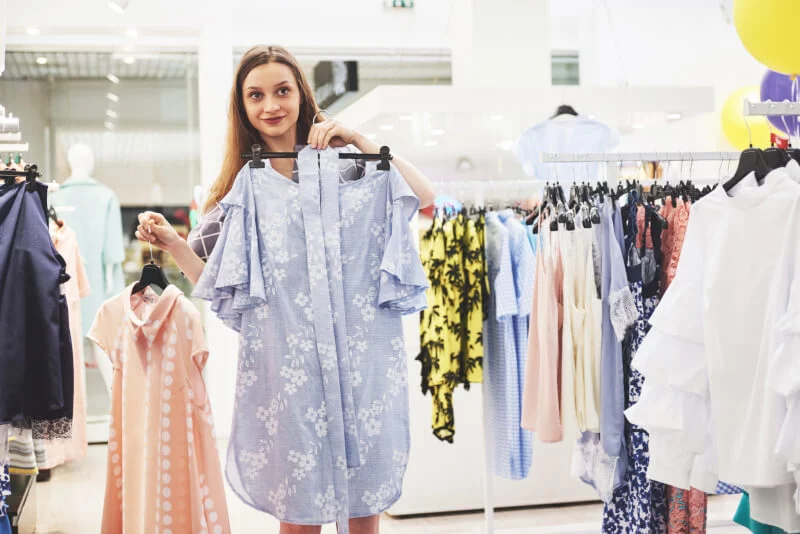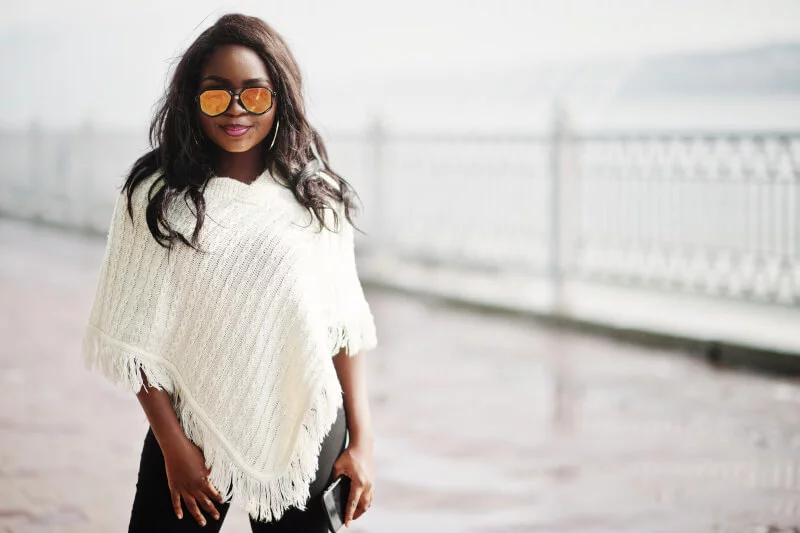Predicting future fashion trends in sufficient time to meet client demand on schedule and preserve brand relevance is what fashion forecasting is all about. This is essential because of the length of time needed for conceptualization, fabric selection, trim application, product development, and distribution via suitable channels. Forecasts are often generated 18 months to 2 years before product creation, sales, and distribution, and fabric and yarn designers prepare 2-3 seasons before the product debuts. Therefore, designers, wholesalers, and retailers in the fashion industry need meaningful and relevant predictions made quickly.
The trajectory of fashion and the purchase habits of consumers can be gleaned from the analysis of trends in areas like fabric, color, texture, print, design, silhouette, pricing, and quality. Modern consumers’ decisions are influenced by more than just the price of a product or service. The role of a futurist is to help designers plan for the future by identifying the causes of change, following evolutionary patterns, keeping an eye out for anomalies, and so on.
Promotional Product
Recognizing the social, cultural, ethical, and environmental factors that may affect consumer behavior helps make long-term preparations. Products and methods need to change to reflect the shifting preferences of consumers. Understanding customer emotions, behaviors, and purchasing habits has replaced the analysis of demographic information including age, gender, and income levels in fashion prediction.
As the needs of the market evolve, the shape, function, and originality of goods and services go through numerous revisions. Changes in other sectors, including transportation, healthcare, the food and beverage industry, publishing, furnishings for homes, and interior design, all affect fashion forecasting. To help retailers and designers promote their products, fashion forecasters study historical data to identify patterns that may indicate future developments.
Predictions in the fashion industry

Researching Upcoming Trends in the Fashion Industry is a Complex and Time-consuming Procedure
Conducting market research entails studying market conditions, going to runway shows, examining fabric and yarn shows, fairs, and exhibitions, mapping competitors, conducting market analysis, assessing the quality of popular designer collections, surveying relevant print and online media, observing street fashions in major fashion hubs, and networking with industry insiders.
Sales can be boosted by anticipating future trends in color palettes, cuts, materials, textures, designs, prints, and patterns, as well as innovations in technology, design, and usefulness. Colors entice buyers and can play a major influence in their decision-making processes. Analysts and artists need to pay close attention to the symbolic significance of color because it varies among cultures, religions, holidays, and seasons. Colors make the item feel more modern. Color tales are a powerful tool for retailers to use when promoting their wares.
Textile innovation includes the creation of novel fibers, yarns, and fabric structures, as well as the introduction of novel printing techniques and other finishing methods. In response to practical needs and the opportunities they present, new textiles may emerge. Multiple purposes and improved functioning can be incorporated into one garment, such as an anti-crease or anti-bacterial finish. Sustainable fabrics like tencel, cork leather, seaweed fabric, etc., are now readily available. These technical shifts could usher in a new era of “in” or “out” materials.
Market and Consumer Segmentation Can Be Better Understood Through Customer Research and Consumer Scanning
As part of this process, we collect information about our customers’ demographics and psychographics by conducting customer surveys via email or telephone, holding focus group discussions, and keeping track of factors like people’s daily routines, the state of the economy, the influence of age and gender on their attitudes towards fashion, and so on. The results of consumer surveys play a crucial role in shaping new products, promoting existing brands, and setting retail policies. The exact moment of the introduction of a new clothing item could be affected by social and cultural shifts. Therefore, the forecast needs to be flexible enough to account for regional differences, cultural cues, and societal shifts to effectively communicate with the target audience.
Market research entails investigating such aspects of a company’s sales as past sales figures, trends in sales, customer reception of new products, the competitive landscape, and the gaps in the market. This can aid stores in handling markdowns and stock shortages better. The fashion apparel industry is notoriously unstable because of the constant need for new styles, the strong seasonality of the industry, and the short product cycles. Unreliable estimates lead to financial losses because of increased markdowns and stockouts.
The final step – a season’s aesthetic is determined by several criteria, some of which have already been mentioned. The detected tendencies allow for the development of products that are more in line with customer needs.
Why We Make Predictions
- To understand a product’s temporal significance and seasonal preferences.
- To find R&D possibilities for competitive differentiation and/or improvement.
- To determine the most important product features that warrant further investigation into the possibility of intervention.
- Customers’ hopes for future innovations and improvements in specific product categories will be determined.
- Find places where there aren’t enough items or services on the market
- To actively seek out new creative avenues.
Methods for Creating New Items Based on Future Trends
- Pick a time of year
- Pick a type of item to sell
- Select the Product Line
- Decide on a central idea or topic around which to build the items.
- Make a mood board or board of inspiration.
- Make a mood board based on seasonal color trends
- Fabric swatch boards should be made using forecasted textile fabrics.
- Construct a trims board
- Make blueprints and layouts for your designs.
- Create collection prototypes and technical drawings.
- Making Tech Kits
- Calculate rough prices and make a price list
- Manufacturers must be identified.
- Plan out your production schedules.
- Constant monitoring of the manufacturing procedure and output quality
- Create Credit and Term Contracts
- Order fulfillment includes final touches and packaging.
- Marketing and retailing
What Motivates People to Try New Styles

Alterations in society and culture play a major role in shaping new trends. However, they are impacted by other change factors such as the increasing interconnectedness of the world’s economies and the proliferation of new forms of communication. These modern forms of communication facilitate the rapid dissemination of information and bring consumers from all corners of the globe closer together, hence facilitating the transfer of cultural and socioeconomic influences on fashion items.
Fashion Has a Limited Shelf Life Since It Follows Seasonal Trends
Long-lasting trends are those that survive the passage of time and the passage of seasons because of the universal appeal of the designs themselves. The four seasons of the fashion calendar are spring/summer, fall/winter, resort, and pre-fall. There are two distinct times of the year:
- spring
- summer
- fall
- winter
Seasons of spring and summer run from January to June, and autumn and winter through July to December. Products designed for the previous season are often heavily reduced to clear out stock before the start of the current season.
The ‘product Lifetime’ Describes the Predictable Development of Any Given Item, Including Clothing

When a product is first introduced to the market, it is usually embraced by a small but influential group of people. Over time, the product’s popularity in the market may grow. We are now in the phase of widespread acclaim and popularity. Eventually, sales usually go down because consumers’ tastes shift and they become less interested in the goods. Customers that are resistant to change may embrace innovation by rejecting currently available products or fashions. Thus, styles evolve over the years. As a result, the fashion cycle is a time series of sales data.
Adoption theory in the field of fashion studies attempts to explain why and how certain styles spread among specific demographics and socioeconomic groups. Trickle-down, trickle-across, and trickle-up are the three models for how trends spread. According to the trickle-down hypothesis, trends in clothing and accessories are set by the wealthy and flow down to the rest of society as members of lower socioeconomic groups attempt to keep up with the Joneses.
This hypothesis has been around since the dawn of the fashion industry. The widespread dissemination of information and the concurrent availability of identical designs across multiple market groups are hypothesized to speed up the trickle-up effect, which speeds up the spread of fashion from one socioeconomic class to another. According to the trickle-up theory, trends first gain popularity among the economically disadvantaged and then make their way up to the affluent. This refers to clothing commonly seen on the streets or among young people.
Technology and social media have expanded consumer access to information and made marketing more efficient for businesses. It is simple to get inspired for new outfits by following the lead of the most popular fashion influencers and bloggers on social media. Artificial intelligence and other cutting-edge technologies make it simple to monitor customer reactions and anticipate future developments.
Prediction Range
Forecasting is employed in practically every facet of modern business, not just the fashion industry. A company’s forecasting efforts should focus on the following areas:
- Forecasts of GDP, currency strength, industrial growth, the job market, the harmony of payments, growth in the economy, etc. are impacted by national and international economic development and conditions.
- Technical projections are useful because they allow businesses to plan for how future innovations could affect their processes and ultimately their success.
- Market expansion tactics, resource availability, and the likelihood of new entrants are just a few of the factors that can be anticipated with the aid of competition forecasts.
- Social projections anticipate how societal shifts will impact the preferences, expectations, and mindsets of shoppers.
- Predictions in the fields of politics, law, and the environment include those of upcoming legislation, political events, labor laws, environmental regulations, and so on. These are all extremely important aspects that affect the sourcing, manufacturing, advertising, and selling of the products.
Increases in both consumer expectations and market volatility highlight the importance of developing reliable projections to provide customers with effective solutions and boost the company’s bottom line. The process of making a company forecast involves taking into account several different variables. It’s difficult to make accurate fashion predictions since it demands thinking forward about what consumers will want, rather than what is now available. In this dynamic, uncertain, and ever-changing context, a detailed investigation may help reach precision.
- A Chat with Nate and Mika, Christian Wedding Photographers - July 18, 2024
- Ultimate Guide To Playing Online Casinos - May 27, 2024
- Addiction Recovery Books Worth Reading - January 24, 2024






